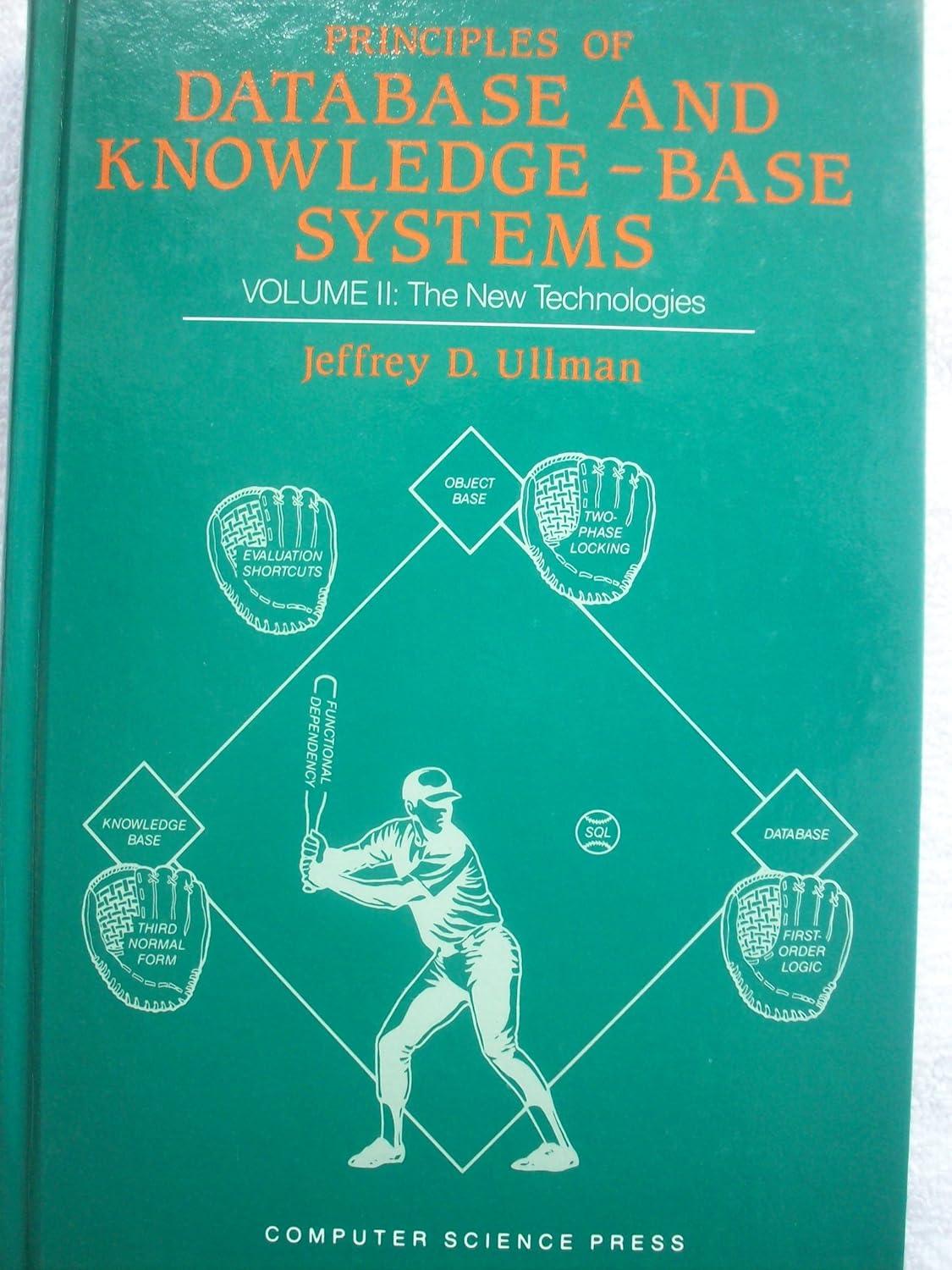Answered step by step
Verified Expert Solution
Question
1 Approved Answer
Assignment 2 : ICT 5 8 1 Question 1 : Normalisation a . Identify Problems with Existing Design: The existing design might exhibit modification anomalies,
Assignment : ICT
Question : Normalisation
a Identify Problems with Existing Design:
The existing design might exhibit modification anomalies, including insertion, update, and deletion anomalies. For instance:
Insertion Anomaly: If a Grand Slam tournament occurs without a winner, we cannot insert the tournament details without violating the primary key constraint.
Update Anomaly: If a player's name changes, we have to update multiple rows, leading to inconsistency.
Deletion Anomaly: If a player's record is deleted, information about the tournament might also be lost.
b Candidate Keys and Normal Form:
The candidate keys could be a combination of attributes like Year, Event, and Winner. The relation is likely in at least the First Normal Form NF as it contains atomic values. However, it may not satisfy higher normal forms due to potential transitive dependencies.
c Convert to Third Normal Form NF:
To achieve NF we should eliminate transitive dependencies. We split the relation into smaller relations to address this. For instance:
Grand SlamTournamentYear Event, Venue, Dates, Location, Surface
PlayerPlayerName, Country
WinnerYear Event, PlayerName
Here, the Winner relation serves as a bridge between tournaments and players, eliminating transitive dependencies.
d Explanation of New Design:
The new design preserves all original information while addressing the identified problems. Each relation now represents a distinct entity, reducing redundancy and dependency issues. By separating data into smaller relations, we ensure data integrity and facilitate efficient querying and updates.
Question : Conceptual Design
For the conceptual design, we need to create an EntityRelationship Diagram ERD for the Western Highlands Zoo database. We'll follow these steps:
Identify Entities: Animals, Animal Types, Enclosures, Zookeepers.
Determine Relationships: Animals belong to Animal Types, Animal Types belong to Classes and Regions, Animals are housed in Enclosures, Zookeepers care for Animals.
Define Attributes: For each entity, list attributes based on the provided information.
Design ERD: Using Crow's Feet notation, depict entities, relationships, and attributes. Ensure to indicate primary and foreign keys.
Make Assumptions: Clearly state any assumptions made during the design process, ensuring they don't contradict provided information.
Address Queries: Ensure the ERD can support the specified queries by structuring entities and relationships accordingly.
Once the ERD is created, it should be pasted into a wordprocessed document along with a legend explaining the notation and any assumptions made.
Let's start by creating the ERD for the Western Highlands Zoo database. We'll begin by identifying entities, relationships, and attributes based on the given case study.
Step by Step Solution
There are 3 Steps involved in it
Step: 1

Get Instant Access to Expert-Tailored Solutions
See step-by-step solutions with expert insights and AI powered tools for academic success
Step: 2

Step: 3

Ace Your Homework with AI
Get the answers you need in no time with our AI-driven, step-by-step assistance
Get Started


